Elbow range of motion exercise
Table of Contents
What is elbow range of motion exercise?
- The elbow range of motion exercise is the capability of the elbow joint to go through its complete spectrum of motion. The range of the motion of the elbow joint is split into three parts, passive range of motion exercises, active-assisted range of motion exercises, and active range of motion exercises. This is refer to the activity aimed at improving the motion of the elbow joint. This movement is influenced by many structures, including, the configuration of bone surfaces within the elbow joint, joint capsule, ligaments, tendons, as well as muscles acting on the elbow joint.
Types of range of motion exercises of the elbow joint
- The first one is the passive range of motion exercise: The movement is applied to the elbow joint only by other person or people or even by the passive motion machine. When the passive range of motion is applied, the elbow joint of a person receiving exercise is completely relaxed during the outside force moves a body part, namely the elbow, throughout the available range of motion.
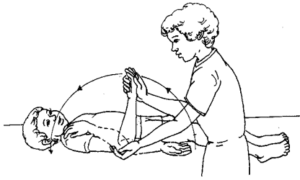
- The second one is an active-assisted range of motion exercise: The elbow Joint receives partial assistance from the outside force. This range of motion(ROM) can result from the majority of the movement applied by the physiotherapist or by the individual or people assisting a patient. It also can be a half effort on the elbow joint from each source.
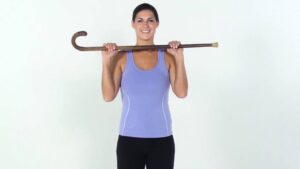
- The last one is an active range of motion exercise: The movement of the elbow joint performed entirely by the patient himself/herself. Mainly in this type of exercise, there is no outside force that can be added while performing the elbow.
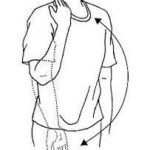
Movements of the elbow joint
- The elbow joint majorly allows the movement to perform, namely flexion, extension, pronation, and supination. The elbow is important due to it allows a person to move the hand into almost any position so a person can perform various activities.
- Flexion: When the forearm moves toward a body by bending the elbow, it is called elbow flexion.
- Extension: When the forearm moves away from the body by straightening the elbow, it is called elbow extension.
- Supination: The rotation of the forearm as well as a hand so that the palm faces forward or even upward
- Pronation: The rotation of the forearm and hand so that a palm faces backward or even downward.
Axis as well as the plane of the movement
- Elbow flexion, as well as extension motions, occurs in the sagittal plane as well as around the frontal axis
- Testing position: The patient is supine or seated with the hand is supinated and the arm parallel to the midline of a body
- Stabilization: Stabilize the distal end of the humerus to prevent flexion of the shoulder joint.
Placement for the goniometer
- Axis location: lateral epicondyle of the elbow
- Stationary arm: parallel with the humerus
- Movement arm: parallel with the radius
- After that, the therapist should give the command to the patient to bend the elbow, and as the movement happens the therapist should move the movement arm and record the active range of motion of the elbow flexion at the end the therapist should give the partial pressure and check the passive range of motion of the elbow flexion. Then, the physiotherapist should give the command to a patient to straighten the elbow from maximum flexion position, and as the movement occurs the clinician should move the movement arm and record the active range of motion of the elbow extension, next the therapist should give the slight pressure to check the passive range of motion of the elbow extension.
- Elbow flexion normal range:0degree to 150degrees
- Elbow extension normal range:150degrees to 0degree
- Forearm supination normal range: 0degree to 90degrees
- Forearm pronation normal range:0degree to 90degrees
Passive range of motion exercise of the elbow
- This is useful for the elbow joint that has become inactive owing to injury or even any type of paralysis attack. In the passive range of motion exercises of the elbow joint, the patient does not perform any motion themselves; instead, the physiotherapist moves the upper limb or even body part of the stiff elbow joint, gently stretching muscles as well as reminding them how to move correctly. In the majority of the cases, therapeutic stretching exercises are combined with the passive range of motion exercises to enhance faster recovery of the stiff elbow joint. Here, a therapist stretches the soft tissue of the elbow to relax the surrounding muscles as well as relieve tension. Passive range of motion exercises for the elbow also assists to minimize stiffness as well as rigidity in the elbow joint that has been immobilized.
- Some of the most common as well as safest passive range of motion exercises for the elbow are related to stretching the surrounding muscles with the goal to improve muscle flexibility. One way to do passive range of motion exercise is with a specialized tool such as the stretching strap. These exercises help the patient hold the stretch for a more sustained period of time, but having a therapist who helps with the stretch is the more effective way to practice passive range of motion exercises for the elbow. With this type of exercise, the trained professional moves the upper arm into the stretch as well as holds it, with the intent to improve muscle flexibility.
This is superior for a few reasons.
First of all, the therapist understands proper limits as well as knows how far to go.
Secondly, a therapist knows how long to hold the stretch.
Lastly, a physiotherapist is also trained to know if it is targeting the proper area to achieve more benefits. With that in the mind
In which conditions the therapist should apply the passive range of motion exercise in the elbow joint
- The passive range of motion(PROM) exercises for the elbow joint are typically used where there is a paralysis attack, when a patient is comatose, in a presence of the healing fracture, or if the pain is elicited during the active muscle contraction. One of the chief goals of passive range of motion exercise is to counteract the contradictory effects of immobilization, but it is important to remember that a passive range of motion (PROM) exercise cannot prevent muscle atrophy.
Some benefits of the passive range of motion exercise of the elbow
- Passive range of motion exercises does not only help in promoting healthy joint functionality but also benefit the patient in reducing pain, promoting healing, restoring as well as maintaining range of motion in certainly injured joints, and building muscle mass, allowing for better blood flow and aids in increasing oxygen levels.
Some guidelines for passive range of motion exercise for the elbow
- Passive range of motion can be done in lying or even in sitting positions.
- Support the weight of an arm at all times.
- Support above and below the elbow joint a patient is moving.
- Keep the movement slow and smooth.
- Do not force the movement if the elbow muscle or elbow joint is stiff.
- The physiotherapist should move only as much as the elbow muscle or elbow joint will allow.
- A passive range of motion should be pain-free. If the elbow movements cause pain, stop as well as let the physiotherapist know.
Exercise
- Passive elbow flexion in full supination
- First of all, the therapist should support the patient’s elbow or upper arm with one hand as well as hold the wrist or forearm with the other hand. After that, the therapist should slowly bend from the elbow and have the hand touch the elbow if possible. Do it ten times per session. Do three sessions per day.
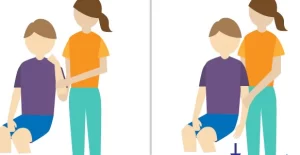
- Passive elbow flexion in mid pronation position
- To begin with, the physiotherapist should give the command to the patient that takes a relaxed position such as supine with mid pronation of the hand. After that, the physiotherapist should support the patient’s elbow or upper arm with one hand and hold the wrist or forearm with the other strong hand. Then, the physiotherapist should slowly bend from the elbow and have the hand touch the elbow if possible. Do it 10 times in one session. Do 3 sessions in one day.
- Passive elbow flexion in full pronation position
- To embark with, a therapist should give the command to a patient that takes a comfortable position such as supine with full pronation of the hand. Then, the therapist should support a patient’s elbow or upper arm with one strong hand and hold the wrist or forearm with the other hand. Next, a clinician should slowly bend from the elbow and have the hand touch the elbow if possible as well. Do it ten times per session. Do three sessions per day.
- Passive elbow extension
- To begin with, a therapist should support a patient’s elbow or upper arm with one hand and hold a wrist or forearm with the other hand and the hand must be bent. Then, a therapist should slowly straighten the elbow and have the hand touch the elbow if possible. Do it ten times in one session. Do three sessions in one day.
- Passive elbow supination
- First of all, tell the therapist to take a supine or sitting position with a supported back. After that, the therapist should grasp the hand like shaking the hand. Then, the therapist moves the hand in supination which is in pronation position, so the palm of the hand should face the ceiling. Next, do this exercise ten times per session. Do three sessions per day.

- Passive elbow pronation
- To begin with, tell a therapist to take a relaxed position, namely a supine or sitting position with a supported back. Then, a therapist should grasp a hand like shaking a hand. Next, a therapist moves the hand in pronation which is in a supination position, so the palm of the hand should face the floor. Do this exercise ten times in one session. Do three sessions in one day.
- Passive elbow flexion by the patient’s other hand
- To embark with, the therapist should give the command to the patient that takes a comfortable position such as supine. After that, the patient should place the non-affected hand on the posterior side of the forearm. Then, the patient should slowly bend from the elbow and have the hand touch the elbow if possible. Try to do a full range of motion of the elbow flexion. Do it ten times in one session. Do three sessions in one day.
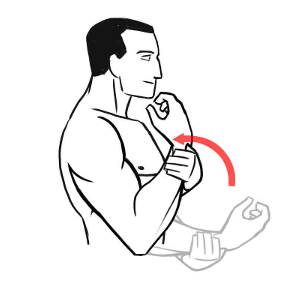
- Passive elbow extension by the patient’s other hand
- To begin with, the physiotherapist should give the command to a patient that takes a relaxed position such as supine. Next, a patient should place the uninjured hand on the anterior side of the forearm and the starting position of the elbow should be fully flexed. After that, a patient should slowly straighten from the elbow and have the hand touch the elbow if possible. Try to do a full range of motion of the elbow extension. Do it ten times per session. Do three sessions per day.
- Passive supination by the patient’s other hand
- First of all, the physiotherapist should give the command to a patient that takes a relaxed position such as sitting on the chair with the support. Then, a patient should grasp the affected hand from the distal forearm by the uninjured hand. After that, the patient should slowly rotate the forearm outside or upward, stating the position of the hand should be fully pronation from the elbow and have the hand touch the elbow if possible. Try to do a full range of motion of the forearm supination. Do it ten times per session. Do three sessions per day.
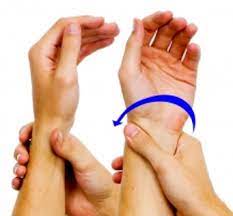
- Passive pronation by the patient’s other hand
- To begin with, the therapist should give the command to the patient that takes a comfortable position such as sitting on the chair with the back supported. After that, the patient should grasp the injured hand from the distal forearm by the unaffected hand. Next, the patient should slowly rotate the forearm inward or downward so the hand should be facing the floor, embarking position of the hand should be fully supination from the elbow, and have the hand touch the elbow if possible. Try to do a full range of motion of the forearm pronation. Do it ten times in one session. Do three sessions in one day.
Active-assisted range of motion exercise
- As per name suggests, these exercises involve partial help from the therapist or from the patient himself/herself. The patient does most of the motion, but he/she gets little help to complete the elbow motion correctly. In most cases, this restricted elbow movement is the result of weakness or pain caused due to falls, bruises, or accidents, up to serious injuries. The physiotherapist mostly uses the strap or the band to secure the elbow joint before helping the motion. In the starting, a patient may suffer a great deal of pain as well as a weakness when performing these exercises, but with the time, a patient has a great scope for gradual as well as lasting improvement in the range of motion around the elbow joint.
Some benefits of the elbow active-assisted range of motion exercise
- Improve motion of the elbow joint.
- increase the function of the elbow joint as well as the whole upper limb.
- Increase motion efficiency.
- Improve independence.
- Reduce pain.
- Increase as well as maintain elbow joint integrity.
- Active-assisted elbow flexion
- To begin with, the therapist should give the command to the patient that takes a relaxed position, such as sitting on the chair with the back supported. after that, the clinician should support a patient’s elbow or upper arm with one hand and hold the wrist or forearm with the other hand. Next, the therapist should tell the patient to move the forearm to the face side, meaning ben the elbow, but when the patient stops doing this movement, the therapist assists to complete the full range of elbow flexion. Do ten repetitions in one session. Do three sessions in one day.
- Active-assisted elbow flexion in mid pronation
- To embark with, a physiotherapist should give the command to a patient to take a comfortable position, such as sitting on the chair with the supported back and hand in mid supination. Then, a therapist should support the patient’s elbow or upper arm with one hand and hold the wrist or forearm with the other strong hand. After that, a clinician should tell a patient to move the forearm towards the face side, meaning bend the elbow, but when a patient stops doing this motion, a clinician helps to complete the full range of elbow flexion. Do it ten repetitions per session. Do 3 sessions per day.
- Active-assisted elbow flexion in pronation position
- First of all, a physiotherapist should give the command to a patient to take a comfortable position, such as sitting on a chair with a supported back. Then, a therapist should support the patient’s elbow or upper arm with one hand and hold the wrist or forearm with the other strong hand as well. After that, a physiotherapist should tell a patient to move the forearm towards the face side, meaning bend the elbow, but when a patient stops doing the movement, a clinician aids to complete the full range of elbow flexion. Do ten repetitions per session. Do three sessions per day.
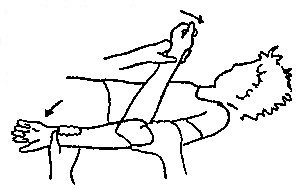
- Active-assisted elbow extension
- To embark with, the physiotherapist should give the command to a patient to take a comfortable sitting position on the chair with the supported back, and the elbow should be bent. After that, the clinician should support the patient’s elbow or upper arm with one hand as well as hold the wrist or forearm with the other strong hand. Then, a physiotherapist should tell a patient to move the forearm from face side to floor side, meaning straighten the elbow, but when a patient stops to do this movement, the therapist helps to complete the full range of elbow extension. Do ten repetitions per session. Do three sessions per day.
- Active-assisted forearm supination
- To start with, a physiotherapist should give the command to a patient to take a comfortable position, such as sitting on the chair with the supported back, and the elbow should be 90degrees flexed with full pronation. Then, the clinician should support a patient’s elbow or upper arm with one hand and hold the wrist or forearm with the other strong hand as well. After that, a physiotherapist should tell a patient to rotate the forearm outward so the palm will be facing the ceiling, but when a patient stops doing this movement, the physiotherapist helps to complete the full range of forearm supination. Do ten repetitions per session. Do three sessions per day.
- Active-assisted forearm pronation
- To embark, the therapist should give the command to the patient to take a relaxed position, such as sitting on the chair with the supported back, as well as the elbow should be flexed 90degrees with full supination. Next, the therapist should support the patient’s elbow or upper arm with one strong hand as well as hold the wrist or forearm with the other hand. Then, the therapist should tell the patient to rotate the forearm inward so the palm will be facing the floor, but when the patient stops doing this motion, the therapist assists to complete the full range of forearm pronation. Do ten repetitions in one session. Do three sessions in one day.
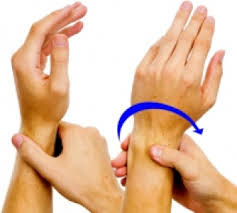
- Active-assisted elbow flexion with the use of the stick
- First of all, a physiotherapist should give the command to a patient to take a comfortable position, such as sitting on a chair or on a table with the back supported. Next, the therapist should support the patient’s elbow or upper arm with one hand hold the wrist or forearm with the other strong hand and tell the patient to hold the end of the stick in both hands. After that, the therapist tells a patient to move the forearm towards the face side with the help of a healthy elbow and hand, meaning bend the elbow. Do ten repetitions per session. Do three sessions per day.

- Active-assisted elbow extension with the use of the stick
- To begin with, the therapist should give the command to the patient to take a relaxed position, such as sitting on the chair or even sitting on the table with the back supported and the elbow would be in the full flexion position. After that, a physiotherapist should support the patient’s elbow or upper arm with one hand and hold the wrist or forearm with the other hand, next tell a patient to hold the end of the stick in both hands. Then, a clinician tells the patient to move the forearm away from the face with the help of a healthy elbow as well as a hand, meaning straightening the elbow. Do ten repetitions in one session. Do three sessions in one day.
- Active-assisted forearm supination with the use of another hand
- To begin with, the therapist should give the command to the patient to take a comfortable position, such as sitting, and the elbow should be 90degrees flexed with full pronation and grasp the affected hand with the healthy hand. Then, the therapist should tell a patient to rotate the forearm outward so that the palm will face the roof, and the uninjured hand should be upper than the injured hand, but when the patient stops doing this motion, a therapist assists to complete the full range of forearm supination. Do it ten times in one session. Do 3 sessions in a day.
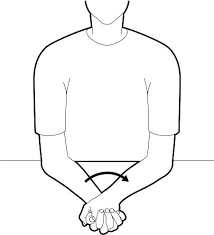
- Active-assisted forearm pronation with the use of another hand
- To embark with, a physiotherapist should give the command to a patient to take a relaxed position, such as sitting, and an elbow should be 90 degrees flexed with full supination and grasp the injured hand with the healthy hand. Next, a clinician should tell the patient to rotate the forearm inward so that the palm will face the floor, and the unaffected hand should be upper than the affected hand, but when a patient stops doing this movement, the physiotherapist helps to complete the full range of forearm pronation. Do it ten times per session. Do three sessions per day.
Active range of motion exercises
Some aims of the active range of motion exercise of the elbow
- Improve strength
- Maintain/increase endurance
- Promote circulation
- Maintain/improve range of motion (ROM)
Active range of motion exercise
- Active elbow flexion
- First of all, tell the patient to take a relaxed position, such as sitting or standing. After that, give the command to the patient that bends the elbow meaning move the forearm toward the face side, but do not hold at the endpoint. Do ten repetitions per session. Do three sessions per day.
- Active elbow flexion in mid supination position
- To begin with, tell a patient to take a comfortable position, mainly sitting or standing. Next, give the command to a patient that bends the elbow meaning move the forearm toward the face, but do not hold at an endpoint. Do it ten repetitions in one session. Do three sessions in one day.
- Active elbow flexion in pronation
- To embark with, tell a patient to take a comfortable position, such as sitting or standing. Then, give the command to a patient to bend the elbow meaning move the forearm toward the face, but do not hold this position at the endpoint. Do ten repetitions in one session. Do three sessions in one day.
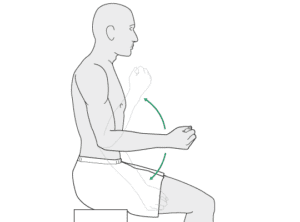
- Active elbow extension
- To begin with, tell a patient to take a comfortable position, such as sitting or standing. Then, the therapist should give the command to the patient that straightens the elbow meaning move the forearm away from the face, and do not hold at the endpoint. Do ten repetitions in one session. Do three sessions a day.
- Active forearm supination
- First of all, tell the patient to take a relaxed position, like sitting or standing with the elbow around 90degrees flexed. After that, the therapist should give the command to the patient that moves the forearm outward so the palm will face the roof. Do it ten times per
- session. Do three sessions per day.
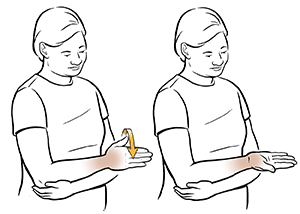
- Active forearm pronation
To begin with, the therapist should tell the patient to take a comfortable position, namely sitting or standing with the elbow 90degrees flexed. Then, a therapist should give the command to a patient that moves the forearm inward so the palm will face the floor. Do it ten times in one session. Do three sessions in one day.

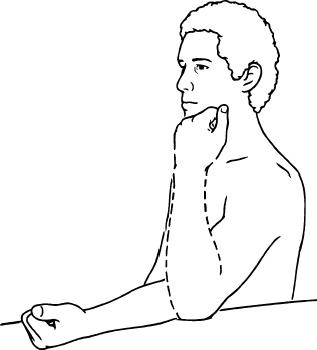
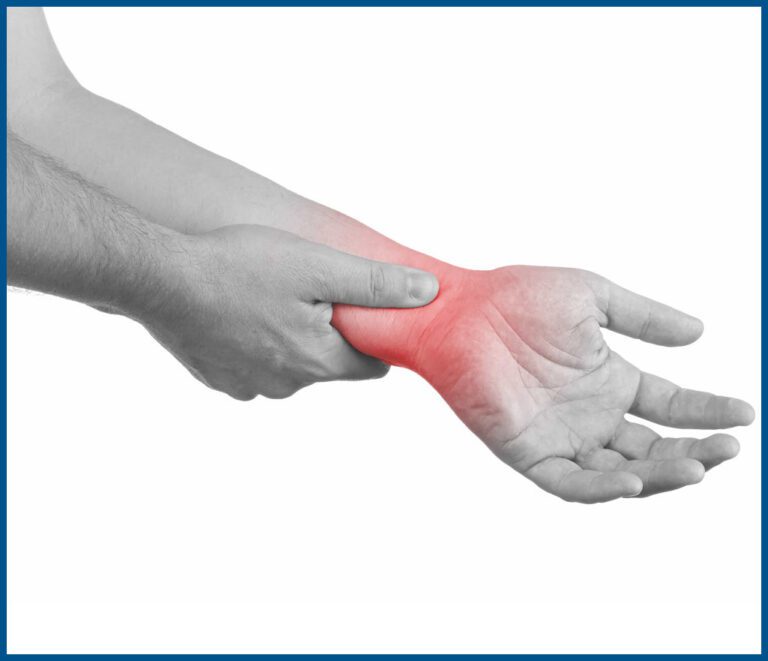

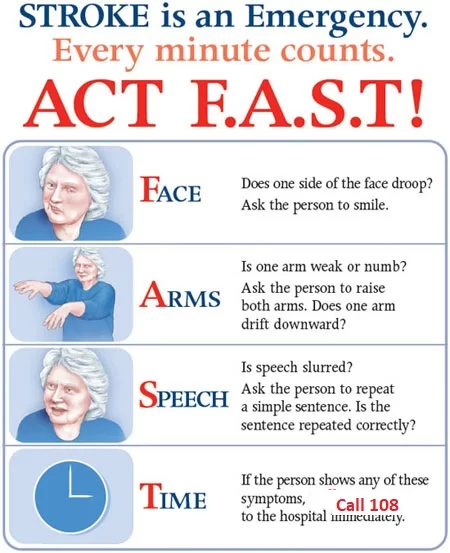

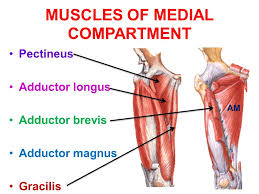
One Comment